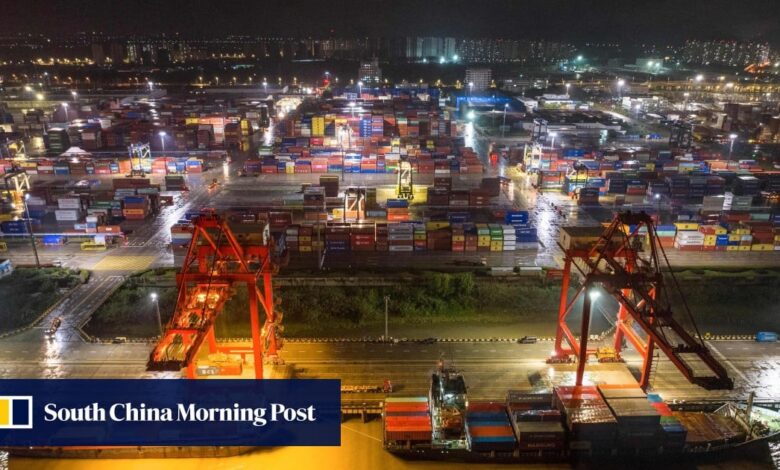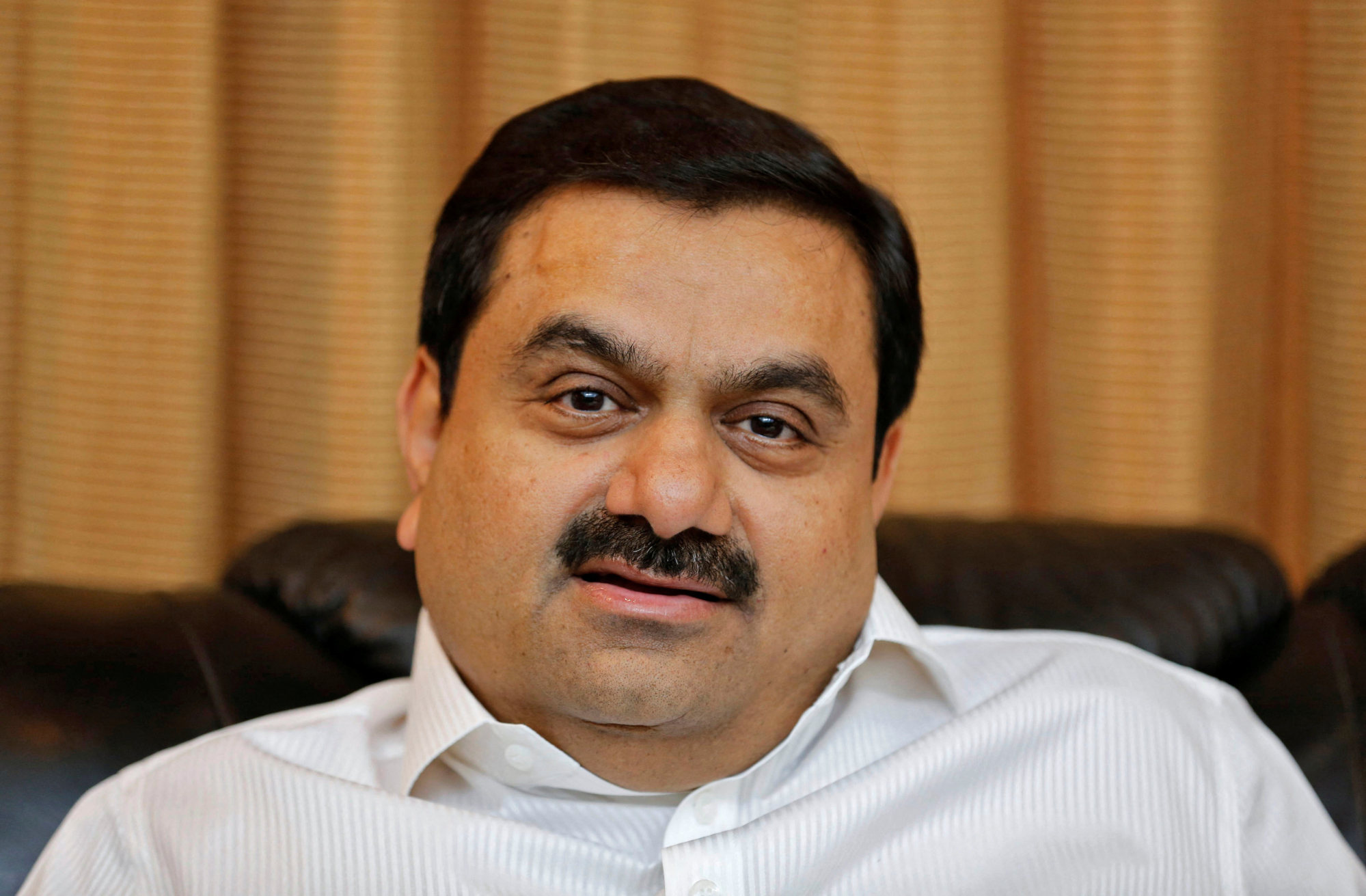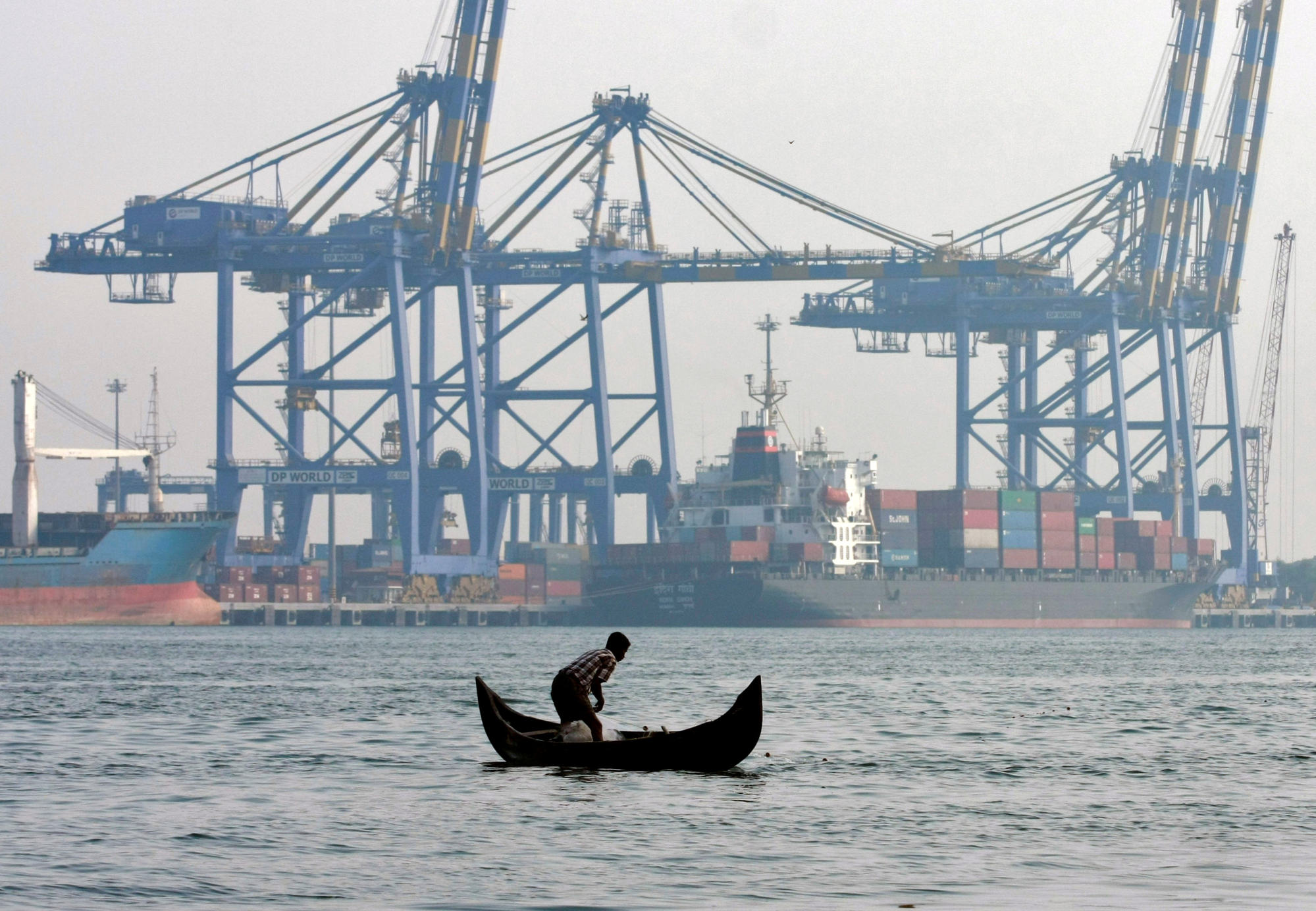India eyes a slice of China’s maritime trade with Adani Group’s new mega port

[ad_1]
Transshipment refers to transferring cargo from an original ship to another, bigger mother ship at a port on the way to the cargo’s final destination.
Is ‘India Out’ of the Maldives as China-friendly leader Muizzu takes charge?
Is ‘India Out’ of the Maldives as China-friendly leader Muizzu takes charge?
“The Indian Ocean is 50 per cent of sea trade,” said Chakri Lokapriya, chief investment officer at TCG Asset Management Co. in Mumbai. “The Vizhinjam port with its natural advantages will improve operating margins for Adani Ports.”
Adani Ports will invest 200 billion rupees (US$2.4 billion) in Vizhinjam Transhipment Terminal by 2030, Managing Director and Chief Executive Director Karan Adani said on Sunday. The project has already received an investment of 77 billion rupees under the first phase.
The Vizhinjam project is strategically important for Adani Ports to gain a foothold in offering integrated supply-chain solutions to shipping lines, he said. The company has free cash flow of 70 billion to 80 billion rupees and will invest as much as 60 billion rupees every year to expand capacity, he said.
Poor shipping connectivity has hindered India’s integration into the global value chain, the Reserve Bank of India said in a 2022 report. India’s container traffic was only 17 million twenty-foot equivalent units, or TEUs, in 2020 versus China’s 245 million TEUs, according to a February 7 statement from the ports ministry.

“The upcoming ports at Vizhinjam (Kerala) and Vadhavan (Maharashtra) have natural drafts in excess of 18 metres that would enable ultra-large container and cargo vessels to call on the ports thereby boosting the efforts to make India the world’s factory” by improving the container and cargo traffic, the ministry said in the statement.
Vizhinjam port, according to the Adani Ports website, will offer a quick turnaround of vessels including Megamax container ships. It will have a capacity of 1 million TEUs in the first phase at an investment of 77 billion rupees. About 6.2 million TEUs will be added in the subsequent phases.
Receiving the first ship at Vizhinjam on Sunday was a spectacle in Kerala, with people flocking in large numbers to watch the docking. The communist-led regional government turned the event into a statewide celebration, capitalising on it as general elections loom.
Still, running a transshipment container terminal comes with challenges, even for an experienced company such as Adani Ports, which has already faced fishermen protests at the site. A rival facility in Vallarpadam, operated by Dubai Ports World, has been dogged by procedural delays.

The transshipment hub also needs to be connected by a network of road and rail links to warehouses and factories in the hinterland. A lack of such arterial support “can be the Waterloo” for any port, said Mathew Antony, managing partner of Aditya Consulting, an advisory firm specialising in infrastructure, ports and logistics.
The federal government is working on a plan called Maritime India Vision 2030 that seeks to develop world-class mega ports, transshipment hubs and modernise infrastructure at an estimated investment of 1.25 trillion rupees.
As large ships become increasingly more vital to Europe and China trade, India can embed itself on that route, given its strategic location between the Suez Canal and the Strait of Malacca.
Karan Adani said the port company is already in talks with two to three anchor shipping lines that would consider shifting their bases to Vizhinjam.
Indian police clash with port protesters, at least 80 injured
Indian police clash with port protesters, at least 80 injured
“The size of vessels are increasing in the international trade route,” he said. In the next decade, the average size of ships will be around 12,000-15,000 TEUs compared with 6,000-8,000 TEUs now, he said, adding Vizhinjam can handle ships of as much as 20,000 TEUs.
India’s current container traffic is less than 10 per cent of China’s but if the Vizhinjam port is able to lure more ships, it’ll give India – and Adani Ports – a stronger footing in the global maritime trade.
[ad_2]
Source link

